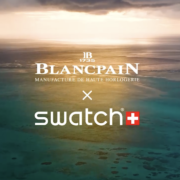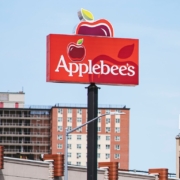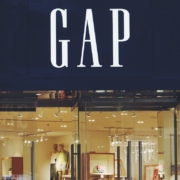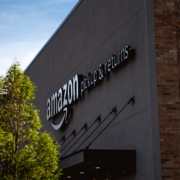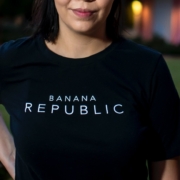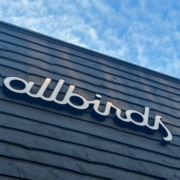Swatch And Budget Luxury: Blancpain x Swatch
Recently, Ian Schrager, entrepreneur, hotelier and co-founder of famed Studio 54, decided to create hotels that are luxury but without the services and amenities. Mr. Schrager’s hotel vision is luxurious experiences that do not depend on multiple on-site staffers and niceties. His vision is a segment he calls Economy Luxury.
According to Mr. Schrager, the idea for an Economy Luxury segment stems from his observation that “… luxury has a new and different meaning today. Luxury right now is having freedom – freedom from hassles to make everything easy, freedom of time, freedom to devote your personal time to the things that matter to you.”
Always an astute observer of cultural changes, Mr. Schrager is clearly on to something. Look at watches.
Swatch Group, the watch group that owns Swatch and other brands, including Blancpain Breguet, Certina, ETA, Glashütte Original, Hamilton, Harry Winston, Longines, Rado, Omega and Tissot, has a similar vision about the evolving nature of luxury.
Last year, in order to generate renewed interest in the affordable Swatch brand, Swatch joined with its sibling brand, Omega, to create the MoonSwatch. According to observers, the MoonSwatch created an offering called Budget Luxury. The customer buys heritage, status, authenticity and exclusivity as well as savvy, one-of-a-kind, in-the-know fun at an affordable price.
The March 2022, Swatch launch of the Omega x Swatch Speedmaster at US $260 was a massive hit. The Omega x Swatch MoonSwatch design resembled the iconic Speedmaster known as the Moon Watch, worn by US astronauts. At its release, the MoonSwatch generated such enthusiasm that crowds surrounded Swatch stores around the world. Bloomberg BusinessWeek reported that in Geneva, hundreds of buyers “snaked around the block” and there was police presence to ensure safety.
The response to MoonSwatch was so extraordinary that Swatch Group released a limited edition of the “most desired” MoonSwatch, the Mission to Neptune. Mission to Neptune became a collector’s item after its original release.
Now, following the success of MoonSwatch, Swatch Group just dropped the 5-watch series Blancpain x Swatch Scuba Fifty Fathoms Collection. Each Blancpain x Swatch Scuba Fifty Fathoms watch reflects the ethos of one of the world’s five oceans. Prices start at US $400. The average price of a Blancpain is US $12,000. The original Blancpain Scuba Fifty Fathoms, a 70-year-old watch, designed for divers, was featured on the wrists of oceanographer Jacques Cousteau’s team for the filming of the Oscar-winning documentary The Silent World. Its list price was US $14,000 but can sell for as much as US $21,000.
On September 7, 2023, there was a Blancpain x Swatch Scuba Fifty Fathoms 5-page advertisement in The New York Times featuring each of the 5 styles, designs and colors: Artic Ocean, Atlantic Ocean, Indian Ocean, Pacific Ocean and Antarctic Ocean.
The Blancpain x Swatch Budget Luxury approach is similar to Ian Schrager’ idea: the concept of attainable luxury for those in the know. The concept of affordable luxury seems to be increasing. People want obtainable opulence. People want the paradox brand promise of economical extravagance. And, brands are offering inexpensive indulgences to satisfy this want.
For example, H&M partnered with Karl Lagerfeld. And, as reported in The Wall Street Journal, Barney’s, the iconic New York City fashion emporium is partnering with affordable teen fashion store Forever 21. Just last week, Forever 21 launched a Barney’s New York collection of “… suiting blazers and trousers, oxford button-downs and turtlenecks, denim jackets and pants, leather and faux-cashmere outerwear.” Missoni, the luxury Italian fashion house, teamed with Target and the clothing items sold out immediately.
And, just recently, Skechers, the California lifestyle and performance footwear brand, dropped the Skechers x Snoop Dogg, described as “high on style.” Ad advertisement appeared in The New York Times Style Magazine.
In the 1960’s Howard Johnson’s restaurants, the ubiquitous roadside eateries, amped up their menu with food created by chefs from Le Pavillion in New York City and enhanced the dining experience with waitresses dressed in Dior-designed uniforms. Howard Johnson’s was considered “affordable glamour.”
The French branding expert, Jean-Noël Kapferer, coined the concept of Abundant Rarity. Abundant Rarity refers to the upmarket trend of luxury items being available but exclusive. Abundant Rarity is a challenging balancing act for luxury brand owners. There are those who believe that the idea of being available everywhere, even if exclusive, makes the brand not luxury. These observers believe that once a luxury brand becomes ubiquitous, it becomes less exclusive. And, being exclusive is considered a critical element of luxury.
Budget Luxury takes a slightly different approach. First of all, Budget Luxury does not indicate that the offering will have major availability. Exclusivity, yes; but not necessarily availability. In fact, many of these budget luxury brands are limited editions. Second, the co-branding brand architecture policy changes the exclusivity dynamic.
Co-branding is a fast way to create a brand. It requires borrowing benefits from each brand. Using co-branding, the watches Omega x Swatch and Blancpain x Swatch maintain exclusivity by virtue of the luxury brand heritage. The watches have luxury authenticity but are offered at Swatch prices. With co-branding, the co-branded brand shares in the brand promises of both brands, in these cases Omega and Swatch and Blancpain and Swatch. The brand benefits of the three brands remain. Omega and Blancpain are not demoted or sullied by the co-branding policy. Both have their original portfolios of ultra-luxury offerings at ultra-luxury prices. The co-branding adds the modernity, hipness and fun of Swatch to Omega and Blancpain. At the same time, the co-branding adds authenticity, prestige and elegance to Swatch.
For the majority of the Budget Luxury brands, the brand architecture that uses the co-branding approach allows the offerings to be considered “small luxuries” that satisfy a want not a need. The symbiotic relationship of two contradictory brands together provides the reason to believe in both luxury and affordability with in-the-know status. There is unique social currency associated with Omega x Swatch and Blancpain x Swatch.
The paradox of these Budget Luxury brands is appealing to consumers, as the crowds outside of the Swatch stores demonstrate. Having an understanding of brand policy is critical. Creating policy on how brands in a portfolio relate to each other is an under-appreciated strategy. But clearly, a brand architecture policy can lead to enduring profitable growth.

